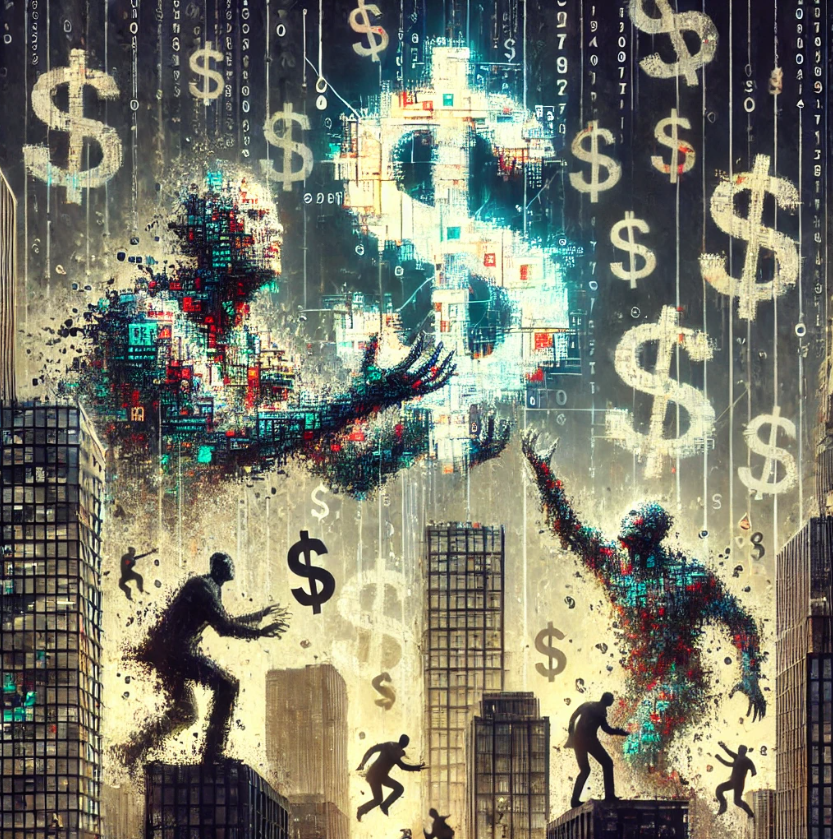I sat at my desk last week watching yet another AI startup raise billions at a mind-boggling valuation, and it hit me: I’ve seen this movie before.
The late 90s had the internet.
Today we have AI.
Same script, different technology. The more you read it, the more similar it becomes.
Back then, slapping “.com” on your company name could double your stock price overnight. Today, adding “AI-powered” to your product does the same trick.
But here’s the thing—this isn’t just another cautionary tale about market bubbles. It’s more complicated than that.
The AI revolution, like the internet before it, is both wildly overhyped and profoundly underappreciated at the same time.
Let me explain.
In 1999, venture capitalists openly admitted, “We’re in an environment where the company doesn’t have to be successful for us to make money.”
Companies bragged about not being profitable, because profits were seen as old-fashioned thinking. What mattered were eyeballs, clicks, and growth at all costs.
Fast forward to today. OpenAI is valued at $157 billion despite unclear revenue streams. Elon Musk’s xAI hit a $50 billion valuation before having a product.
When BuzzFeed merely announced it would use AI for content, its stock doubled in two days.
The rhetoric sounds eerily familiar too. In the 90s, we heard endless talk of “paradigm shifts” and how “the internet changes everything.” Today, tech leaders claim AI is “more profound than electricity or fire” and will “transform every industry within years.”
The message? Old rules don’t apply and if you are not on the future wave you are gonna drown in the past.
The results were predictable then and are predictable now. Pets.com burned through millions on Super Bowl ads and sock puppet mascots, only to collapse months after its IPO.
Today’s SoundHound AI went public at a $2 billion valuation and has since lost 75% of its value as reality sets in.
Which brings us to an important concept.
The companies that actually understood what the internet was—not just as a buzzword, but as infrastructure—did ride that wave to success.
Amazon wasn’t just “a website”; it was a complete reimagining of retail logistics. Google wasn’t just “online”; it fundamentally changed how we find information.
The same principle applies today. If you strip away the AI hype and marketing, you’ll find something more interesting—and more valuable—than most realize.
“AI”(as broad as that term is) isn’t actually new.
The term “artificial intelligence” dates back to 1956. The concept of thinking machines goes back centuries—Descartes and Leibniz pondered mechanical reasoning long before computers existed.
What we call “AI” today is essentially math, probability, linear algebra, and optimization techniques, that has been around for decades.
What’s new is the scale and application.
When I train an AI model, I’m not creating a magical brain. I’m applying Euclidean distance formulas and triangle inequalities in spaces with more dimensions than there are atoms in some molecules. Each weight adjustment shifts coordinates in this vast geometric realm, subtly redefining how the system maps meaning.
These aren’t mystical incantations (well they may look like that to future humans in 2,000 years) they’re mathematical techniques operating at scales that were previously impossible.
And that’s where the true revolution lies.
And oddly enough this is also the paradox.
AI is both the most overhyped and underappreciated technology of our time.
It’s overhyped when people claim it will solve all our problems overnight or replace human creativity entirely.
It’s overhyped when businesses rush to add “AI” to their products without meaningful implementation, what industry insiders now call “AI washing.”
Yet it’s also profoundly underestimated.
Most people, even those investing millions in it, don’t fully grasp how AI is (and has) reshaping our relationship with information and computation.
This isn’t just about chatbots answering questions or generating images.
It’s about systems(watch this video from a Stanford professor on compound systems, its gold)
Systems that can map meaning and recognize patterns across complex domains in ways that even educated humans might not think to connect.
The internet bubble burst spectacularly, but the internet itself transformed our world.
The AI bubble will likely burst too, but the technology will still reshape industries in ways we’ve only begun to understand.
This pattern of boom, bust, and eventual transformation tells us a lot about what’s coming.
When the “music” stopped in 2000, most dot-coms collapsed.
But Amazon survived a 95% stock plunge and eventually built AWS, revolutionizing cloud computing. Google avoided the IPO frenzy, built a sustainable ad business, and went public after the crash.
What separated the survivors from the casualties wasn’t just technology, it was fundamentals.
Amazon’s customer obsession and efficient logistics were genuine advantages, not just marketing. They weren’t just “doing e-commerce”—they were solving real customer problems better than anyone else.
Google didn’t just have cool search technology—it figured out how to make money with targeted ads.
When funding dried up, companies needed actual revenue to survive.
The winners built infrastructure and competitive moats, Amazon’s warehouses and logistics networks, Google’s data advantages, things that competitors couldn’t easily copy.
Today’s AI landscape will likely follow similar patterns. The AI companies that will thrive need more than just exciting demos, they need business fundamentals.
Nvidia shows one path to success—selling the “picks and shovels” that power the AI gold rush. Their specialized chips are essential infrastructure with real demand. That’s why they’ve genuinely profited from AI while others are still burning cash.
So what does this mean for you, whether you’re an investor, a business owner, or just someone trying to make sense of AI’s impact?
First, be skeptical of miraculous claims.
When someone tells you their AI product will “revolutionize everything,” ask the hard questions: What specific problem does it solve? How does it make money? What advantage does it have that others can’t easily copy?
Or the most important question “Why will your company not be replaced by a new model update from the big guys? ”
Second, recognize that despite the hype, something profound is happening.
AI isn’t magic(well at least not to NLP engineers), but it is transforming how we process information in ways that will ripple through every industry.
Third, focus on fundamentals.
The AI companies that survive won’t be the ones with the flashiest demos or biggest funding rounds.
They’ll be the ones solving real problems, building sustainable revenue, and creating genuine advantages that competitors can’t easily replicate.
The dotcom crash didn’t kill the internet—it killed businesses that had no real plan beyond raising money.
The coming AI shakeout won’t kill AI either. It will separate the Pets.coms from the Amazons, the pretenders from the builders.
AI isn’t going away. But a lot of AI startups will.
When the dust settles, the ones still standing will be those who remembered that cool technology alone isn’t enough—you need a real business too.
That’s the lesson of the dotcom bubble. And it’s a lesson we’re about to learn all over again.










Meera
29 April 2025 — 19:24
I like your description of AI as overhyped and underestimated, existing as a paradox now. Computers would have faced a similar situation at some point of its origins! I guess its a matter of learning its possibilities and limitations in the years to come. And that will take time, but yes, meanwhile, the economy built around it should be approached with caution.